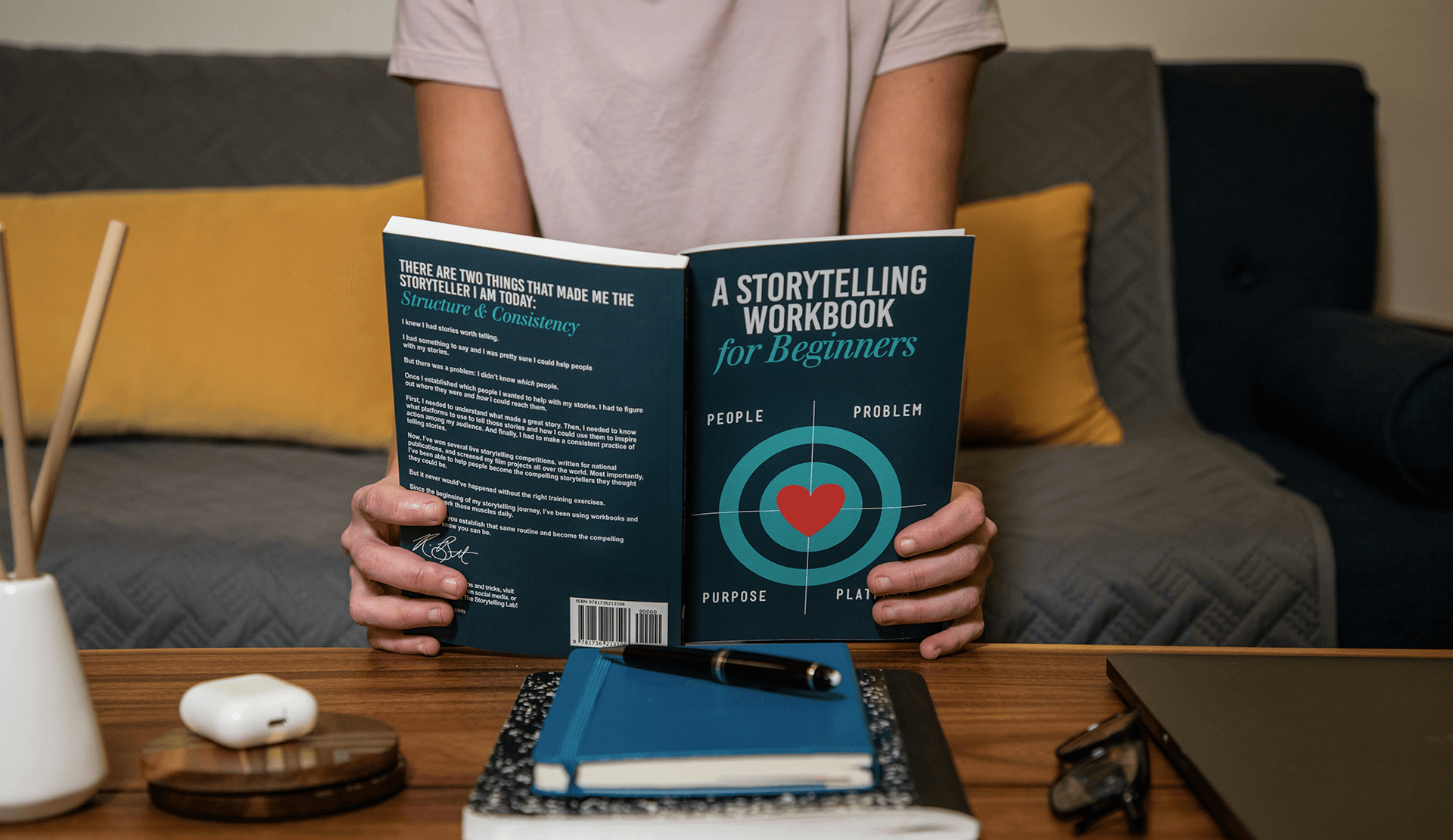The Key to Success – Storytelling
You may already have a website for your business. Or perhaps you‘re here because you‘re in the planning stages and need some extra tips? Either way, this is something everyone should consider when building a site for their business.
We all have visited websites that just seem….blah! There’s nothing particularly wrong with them per se; they may have nice photography, the site is fairly straightforward, and somewhat visually interesting. So why do they feel so cold, uninviting and make you want to jump off?
Let’s face it, most people are drawn toward stories. Back in the early days, storytellers were renowned because that was how you learned things outside of your realm of life. They were the early “walking dictionaries”, wise men, and newspapers. This was information and connection. We are still very basic in the sense that we all connect with a good story. On the deepest level, we are searching to find a commonality and see ourselves in a narrative. Why align with this person? Are they a single mom, too? Are they also from a small town in California? Did they graduate from the same college? We are less likely to align if we fail to connect and relate.

So what can you do to connect your business and your product? You want to skyrocket sales not win a Pulitzer Prize after all…
How do you tell a story which people can hold on to that resonates long and hard? There are several different ways.
1. Visual Storytelling – This is a very basic way of getting a feeling or mood across. They fill in the blanks but you guide them along the path with very little help. There are parallax scrolling websites that have full photos with minimal type to just communicate the basics: “Came from here, going to there…” This is effective because people are very drawn to stunning photography. Visuals appeal to all ages especially with the need to “wow” them quick. While you should always include photography with any option, this is one area that should be planned out accordingly in order to guide the narrative along.
2. Origin Story – Many companies have a blurb (sometimes short, sometimes long) about the founders story. Who decided to start brewing? Who wanted quality working jeans? People are inspired by struggle, overcoming, and ultimately success. Don’t be afraid to share the struggle to the top! Vulnerability is a huge stepping stone to connection, and it’s one that really resonates with audiences.
3. Pick A Side / Join A Struggle – Another way to do this is to parallel yourself and champion a cause. Similar to Nike’s techniques. While some suggest it’s a super risky move to make a statement which might have social or political backlash, if that is part of your story it will speak to people. It may thin out the herd of potential customers or clients, however you may win clients for life in the process. Your story might be one of supporting a team or a person in the spotlight. Brands have been doing this for so long, (Desi and Lucy drank Instant Sanka!) and that’s because it works!
The important thing to remember when telling a story is that you don’t need a beginning, middle, and end. When selling a potential client, you are showing them the beginning. There may not be much to it, but that’s okay. They want to know, all the same. If there’s not much else to say, utilize a lot of relevant photography. If you have a lot to say, make sure to use typographic hierarchy to make sure they see the important parts and draw them in. If you are aligning yourself with a cause, remember to be open. Support is key. Don’t use tear-down tactics.
QUICK EXERCISE FOR YOU!
- When you see the photo below, what kind of story do you get?
- What questions do you have?
- What might be sold?
- Why is it more effective in black and white vs. color?

Always consider the mood you are creating and how to be the most abstract when using photography. You don’t need a photo of your product (you’re trying to create a narrative). Maybe show your ideal client before they find your product?
Key components of brand storytelling
When considering your brand story, use these as a guide:
- What is the reason your company came to exist?
- What motivates you, and your team to show up to work each day?
- How can you give your audience an inside look at your company?
People will always remember a good story. A great story – one which personifies your brand – should be the goal in order to position your company most effectively in the marketplace.
Why?
Because brand storytelling is the best way to distinguish yourself from the other brands in your industry. The more you can pull back the curtain and allow your audience to see inside your company, the better. It humanizes your brand. It’s what helps you to connect with your audience, appeal to their emotions and touch the hearts of your customers.
Let us help tell your story!
If you are curious where to go next on your site building journey, or feel stuck, just reach out! We‘re ready to help with your next steps.
Email us: hello@829design.com or call (916) 581-1777
Happy storytelling!
